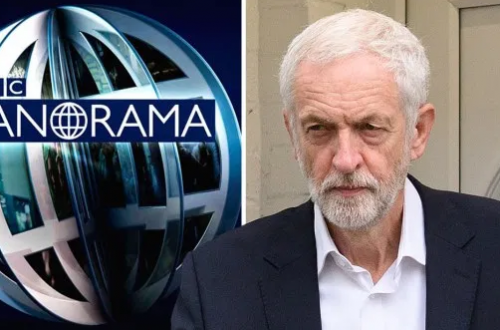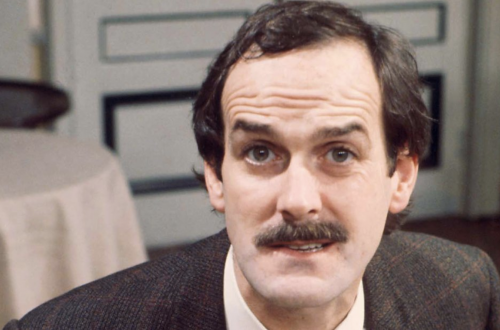This is a guest post by Quizblorg
Joe Sacco’s cartoon on Charlie Hebdo for the Guardian has received lots of favourable attention; it was promoted on twitter by many influential people – Owen Jones (who calls it “brilliant” and “wise”), Ta-Nehisi Coates (who calls it “great”, “sharp”, “creative” and “beautiful”[!]), Chris Hayes, Anne-Marie Slaughter. CNN’s Hala Golani was more cautious in her recommendation than others, just calling the cartoon “interesting” – but from someome who (according to Wikipedia) “avoids discussing her political […] views, citing the need for professional neutrality”, this probably counts for a ringing endorsement. Even Michael Ignatieff and CNN’s Jake Tapper tweeted the cartoon, though without comment, thus not necessarily endorsing it.
It’s rather depressing to see something so wrong-headed – and, in the end, perfidious – gain so much approval.
Let’s look at the cartoon in detail.
Sacco begins by mocking those who respond to the massacre with “defiance” and by “reaffirming the principles of free speech”, representing such an attitude as atavistic and primitive by way of a loincloth-wearing, Tarzan-esque version of his cartoon avatar – implying that it can never be an intellectually considered response, but only one of pure irrational emotion. Defiance is, of course, the exact response that the survivors and the bereaved of the attack consider appropriate – Charlie Hebdo columnist Patrick Pelloux has said that his dead colleagues “would be murdered twice if we remained silent” – but that doesn’t discourage Sacco from denigrating it.
He goes on to attack what is an obvious strawman, “disproving” the notion that offensiveness is a value in itself, by showing us images that are blatantly, over-the top racist (against black people and Jews, respectively) – but that notion is not the argument that is usually advanced by the supporters of Charlie Hebdo, and certainly not what motivated Charlie Hebdo itself.
The point of Charlie Hebdo’s Muhammad cartoons was the refusal to adhere to blasphemy codes, to let yourself be restricted by the demands of religious orthodoxy (no matter which one). If Sacco wanted to make the point that Charlie Hebdo or its supporters’ justifications for publishing the Muhammad cartoons were inconsistent or hypocritical, he would have had to illustrate this with images that are comparable; that are of the same category of offensiveness – namely, images that are blasphemous to other religions. But of course, images like that wouldn’t have been remotely shocking to his liberal, secular audience, and would only have had the opposite of the intended effect.
By the way – whether Sacco drew these racist caricatures grudgingly, like a doctor administering a bitter but necessary medicine, as it is supposed to appear, or whether he did it gleefully, getting a frisson of provocation and transgression out of it, we cannot say; it would be unfair to assume the latter, but might also be unnecessarily generous to assume the former. Others certainly don’t afford that kind of generosity to the murdered cartoonists of Charlie Hebdo – Teju Cole for example saying in his New Yorker piece on the subject: “Blacks have hardly had it easier in Charlie Hebdo: one of the magazine’s cartoons depicts the Minister of Justice Christiane Taubira, who is of Guianese origin, as a monkey (naturally, the defense is that a violently racist image was being used to satirize racism)”.
In the panel between the two caricatures, Sacco accuses Charlie Hebdo of hypocrisy, for firing a columnist accused of antisemitism. Apparently, if you publish something that blasphemes against Islam, and you want to be morally consistent and avoid charges of hypocrisy, you’re not allowed to object to antisemitism. Essentially, what Sacco is doing is taking Charlie Hebdo to task for not being antisemitic enough. This would be nasty under any circumstances; but here he’s doing it while talking about a country in which Jews account for less than 1% of the population yet 40% of the victims of racist crimes…on the very day when four Jews are murdered in an antisemitic hate crime…committed by the same people whose motivations he defends; and if you think the level of obscenity can’t be notched up any more, remember the fact that (as it turned out later that day) the only woman killed in the Charlie Hebdo attack was targetted specifically for being Jewish (and for that reason not spared like the other women at the scene).
This is followed by what amounts to a defence of the killers, or, at the least, a defence of their motivations – the argument being that Muslims are such a uniquely victimized group that it’s understandable for them to be tightly wound and lash out at provocations other groups can more easily endure. (It’s strange to see this line of argument coming from someone who is most famous for works that harshly indict Israeli wrongdoing – apparently Jews don’t count as a similarly victimized group.)
Sacco illustrates his point with an iconic image from Abu Ghraib. It’s not clear if we are to take this image as representing just Abu Ghraib itself, or the whole Iraq war (and possibly the Afghanistan war as well). In the first case, the incidents, nasty as they were, are rather small-scale for them to have victimized an entire population group of 1.5 billion. In the second (and more likely) case, whatever one thinks of the wisdom of the Iraq (or Afghanistan) war, and however negatively one may assess its consequences, it seems rather difficult to interpret an invasion that was welcomed by half of the country’s population (or much more than that in the case of Afghanistan) as an example of oppression. At the least, not even the most ardent detractor of the war can reasonably argue that either the inmates of Abu Ghraib or the civilian casualties of the Iraq war were explicitly targeted for being Muslims, or for practising their religion.
Christians, on the other, are being targeted on account of their religion in many Muslim countries around the world – whether by terrorist groups as in Nigeria or Iraq, or by state institutions and angry mobs as in Egypt or Pakistan. Globally speaking, no religious group faces as much persecution at the moment as Christians. (This does not directly affect Christians in the west, but then neither does what’s going on in the Middle East directly affect Muslims in the west.) Yet somehow I doubt that Sacco would advance the same argument if Christian terrorists in Europe should resort to violence to protect their faith against blasphemy.
(One also can’t help but think that Sacco should perhaps have a conversation with Salman Rushdie to find out if attitudes to anti-Islamic blasphey were really that much more laissez-faire in pre-war times.)
The cartoon ends with melodramatic warnings against an anti-Muslim backlash – when the bodies of the victims hadn’t been buried yet, and while the killers were still collecting new ones.
The place of publication delivers a final irony. The Guardian had just explained that it wasn’t going to show its readers Charlie Hebdo’s Muhammad cartoons (not because of the associated risk, but for “principled” reasons) – but had obviously no problem with publishing Sacco’s cartoon, and the grossly racist images contained therein. So those looking for hypocrisy would be better advised to look to the Guardian than to Charlie Hebdo.


